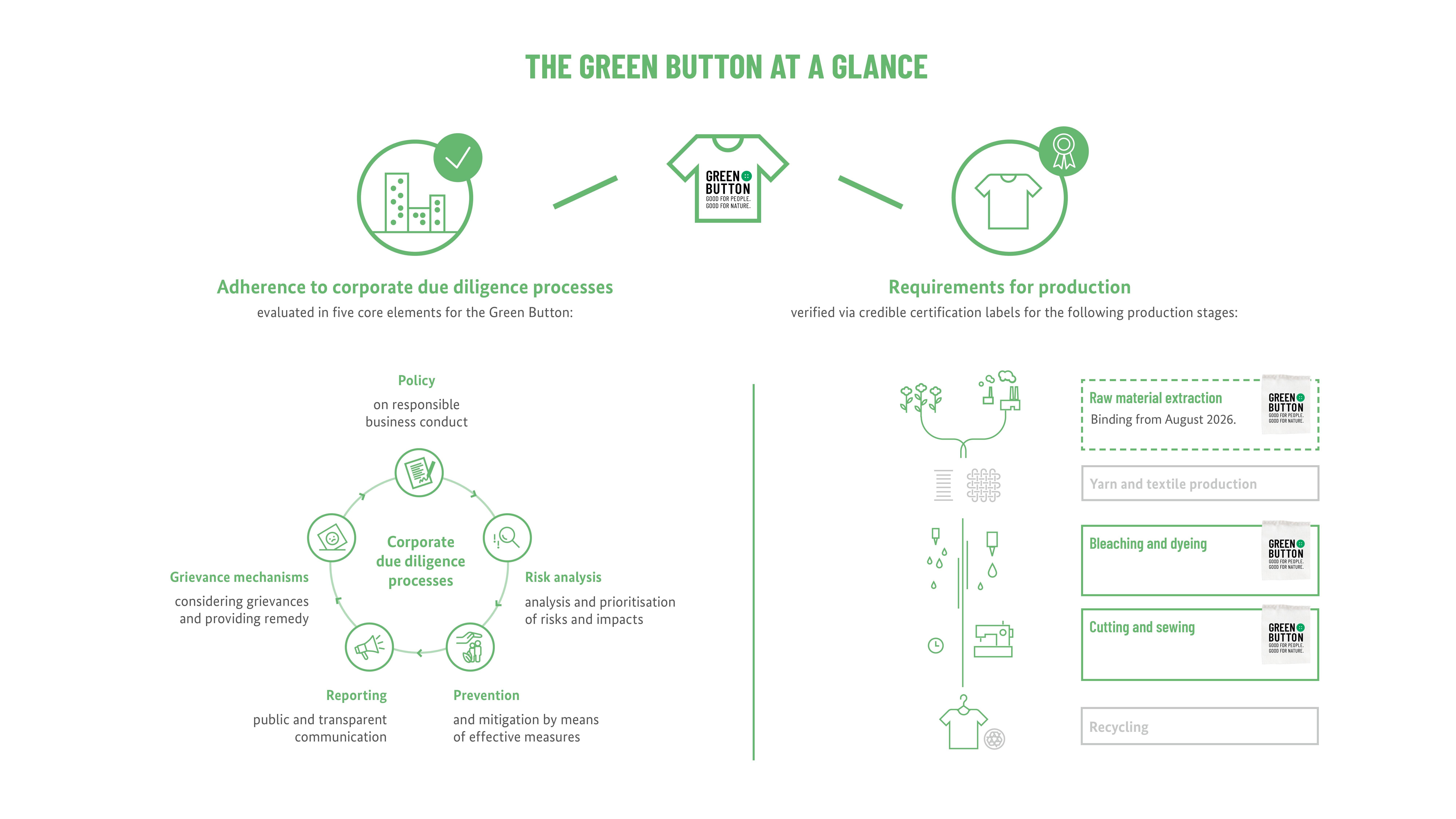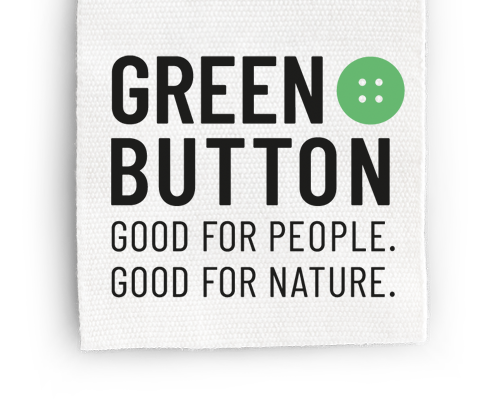The criteria at a glance
The government-run Green Button textile certification label
What does the Green Button evaluate?
It is not unusual for a conventional T-shirt to have travelled 18,000 km by the time it reaches our shops. Many different people are involved in the production of the T-shirt. In addition, the environment can be harmed by different manufacturing processes.
The government-run Green Button certification label evaluates whether a company is taking responsibility for the supply chain and is thereby fulfilling its corporate due diligence obligations. In addition, credible certification labels must prove that the product has also been produced in a sustainable manner.

The companies‘ responsibility!
Responsible companies
From fibres to textile production to dyeing and bleaching to sewing: textile supply chains are not only long, but also widely branched. Maintaining an overview here is a challenge. But this is exactly what companies must face.
If a product bears the Green Button, independent certification bodies have evaluated whether the company as a whole meets its due diligence obligations for the textile supply chain and takes responsibility for its actions: Does the company know the risks to people and the environment in its supply chains? What measures does the company take to prevent risks? Can garment workers express grievances? Does the company take action when grievances occur or other adverse impacts are identified?
Sustainable products
With the Green Button, not only does the company have to deal responsibly with the risks in the supply chain as a matter of principle, but the specific product must also be produced sustainably. To prove this, companies can use certification labels recognised by the Green Button. These are labels that fulfil credibility criteria and impose social and ecological requirements on the production process defined by the scheme owner, e.g.:
- Prohibition of hazardous chemicals or pesticides
- Limited working hours and fixed employment contracts
- Prohibition of discrimination and harassment
- Safety requirements for places of work
These include requirements for the production stages of cutting and sewing as well as bleaching and dyeing. For the latest version of the standard, the Green Button 2.0, requirements for the fibres and materials used must also be met.
Since its introduction in 2019, the Green Button has been under constant development. The latest 2.0 version of the standard has been published since July 2022. The first companies are being evaluated since August 2022. By the end of the transition phase all companies must meet the requirements of the new version of the standard. For the requirements on the due diligence processes the transition phase ends at 31st July 2023. The end of the transition phase for the requirements on production processes is on 31rst July 2024, with exception of the production stage fibres and materials. The transition phase for this stage ends on 31rst July 2026.
The Green Button standard
All documents can be downloaded here as a bundled folder. This includes the relevant documents for the Green Button 1.0 standard as well as for the Green Button 2.0.

